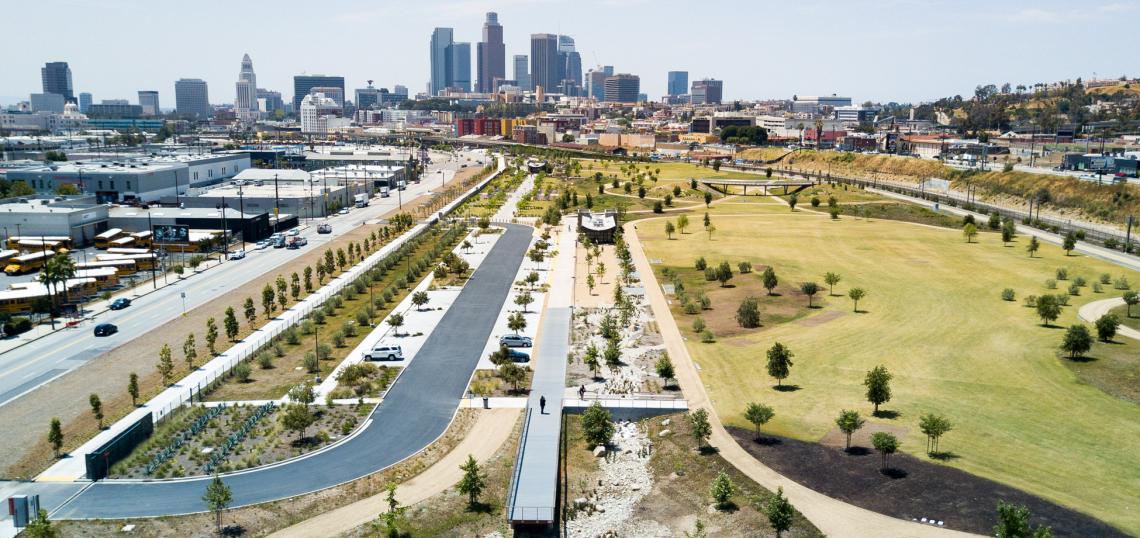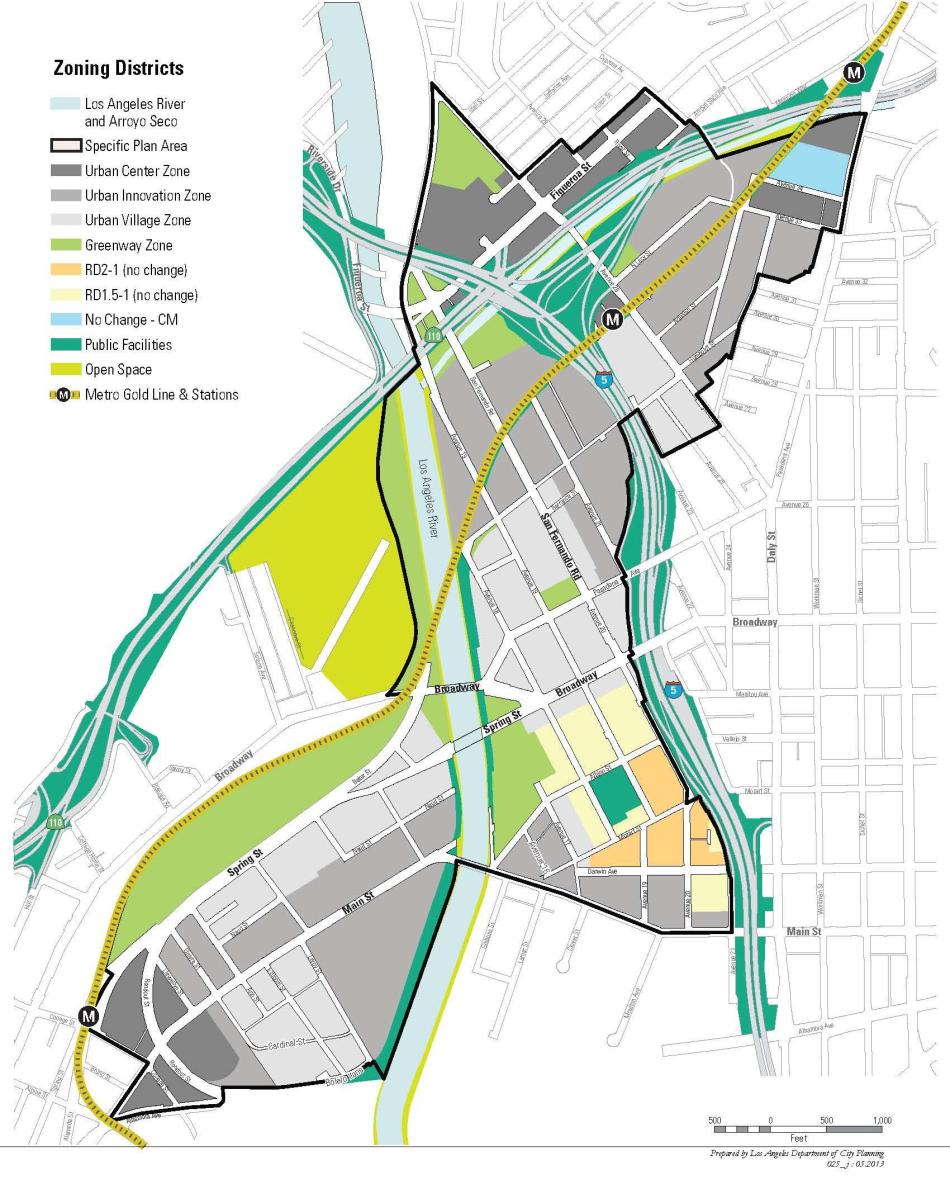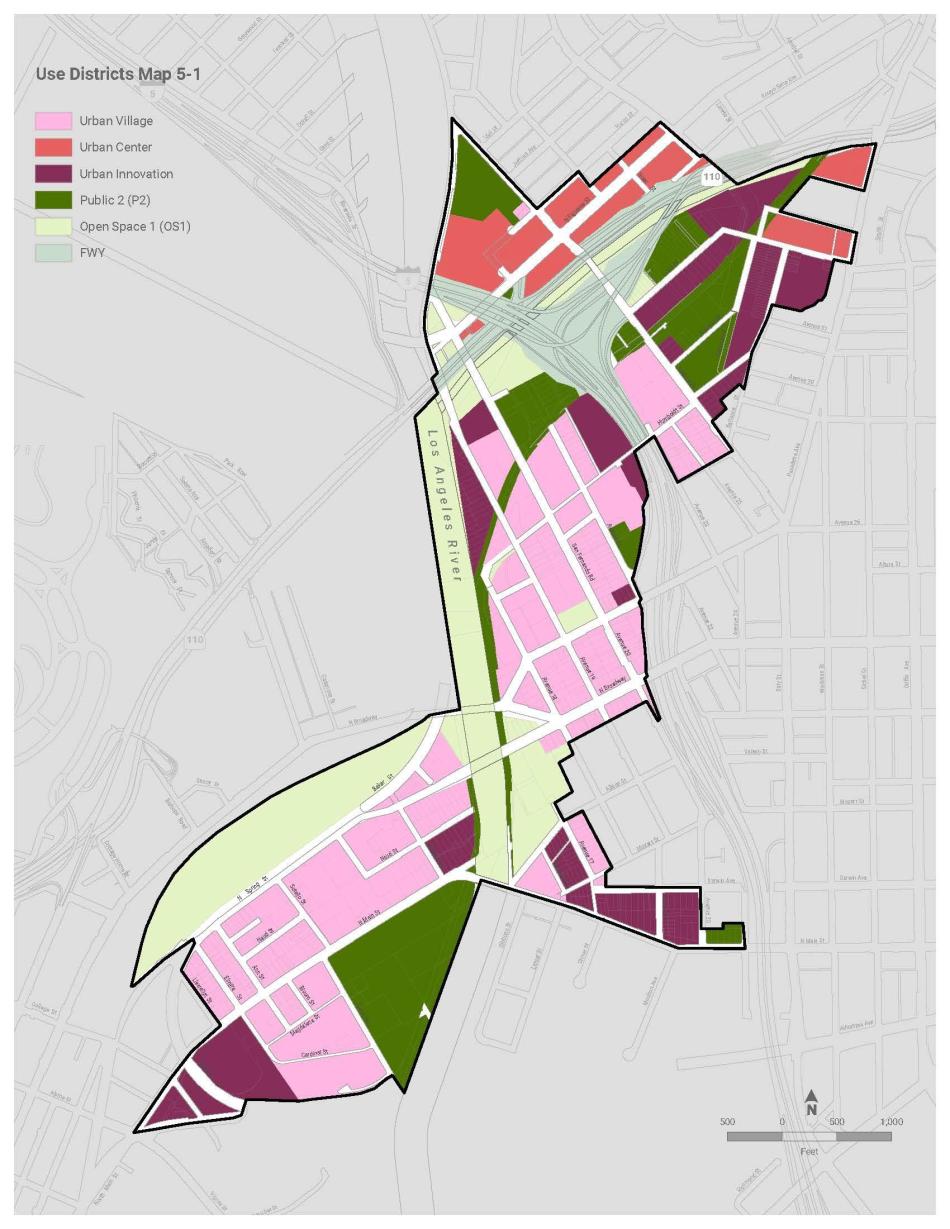The five-year-old effort to update the Cornfield-Arroyo Seco Specific Plan (CASP) has cleared an important hurdle.
On December 7, the Los Angeles City Planning Commission voted to support a long-awaited update to the CASP, which sets zoning regulations for a roughly 660-acre area surrounding the Los Angeles River and Los Angeles State Historic Park in Chinatown and Lincoln Heights.
While the CASP was well-received at the time of its adoption in 2013, removing minimum parking requirements years a decade before the DTLA 2040 plan did so for the Downtown area as a whole, the primary critique of the plan has been its inability to produce housing. While Downtown underwent its biggest building boom in a century, neighboring Chinatown and Lincoln Heights saw relatively little in the way of new construction - and in most cases seeking exceptions from the CASP rules.
The update which made its way through the Commission alters are removes several requirements viewed as barriers to new development, including prohibitions on purely residential buildings in the CASP Urban Village zone, as well as shifting away from limits on the percentage of residential floor area allowed for new developments in the Urban Innovation and Urban Center zones. This would be replaced with minimum requirements for job-producing uses.
The Urban Village zone, already the most residential-focused zone within the CASP, would also be expanded. Under current rules, Urban Village land accounts for approximately 19 percent of the plan area. The update would increase that amount to 28 percent, or 132 acres in total, by rezoning Urban Innovation land located along Main and Naud Streets in Chinatown, as well as several blocks between the Los Angeles River, the Arroyo Seco, the 110 Freeway, and the I-5 Freeway in Lincoln Heights.
The update to the CASP is also being used as an opportunity to introduce other policies and programs included in new community plans and re:code LA. New form districts would be used to regulate floor area, lot coverage, and in some cases, building height, rather than underlying zoning.
Another new element is a tailored community benefits program, similar to the Transit Oriented Communities incentives, which offers waivers of development standards and bonuses for projects that offer affordable housing or other public amenities. As with DTLA 2040, the CASP community benefits program would be structured into two tiers. Housing development projects could double allowable floor area from a base of 1.5 FAR to 3.0 FAR by providing restricted affordable units at the following levels:
After maximizing the bonuses allowed by providing affordable housing, applicants could secure additional development rights by providing desirable community amenities such as publicly accessible open space or community facilities such clinics or libraries. Applicants could also have the option of providing additional affordable housing.
An environmental report circulated for the update estimates that under the new rules, the CASP area could accommodate up to 36,000 residents, and over 10,000 jobs - a sharp increase from the roughly 6,000 residents and 5,400 jobs that exist today. That far exceeds SCAG's growth projections for the neighborhood, which anticipate a population of roughly 14,400 and just shy of 8,800 jobs in the area by 2040.
Follow us on social media:
Twitter / Facebook / LinkedIn / Threads / Instagram
- Cornfield-Arroyo Seco Specific Plan (Urbanize LA)








